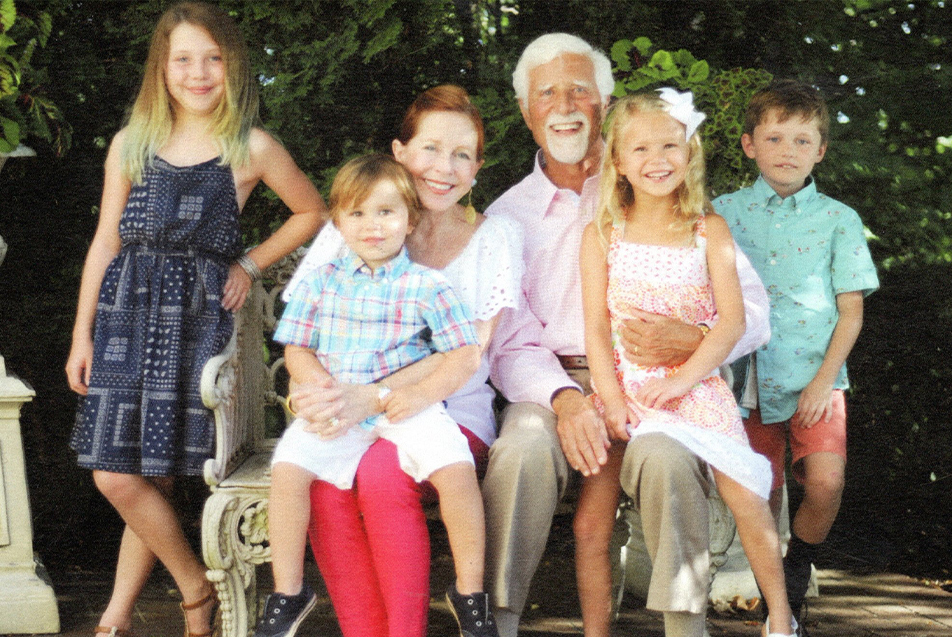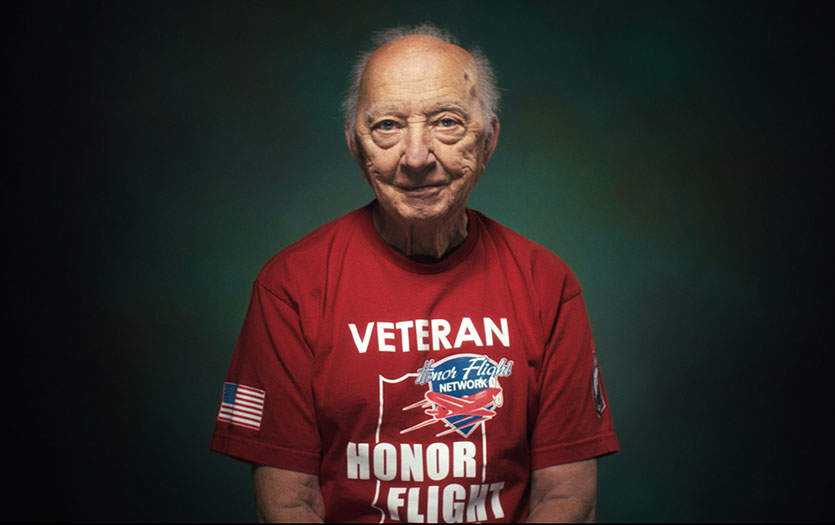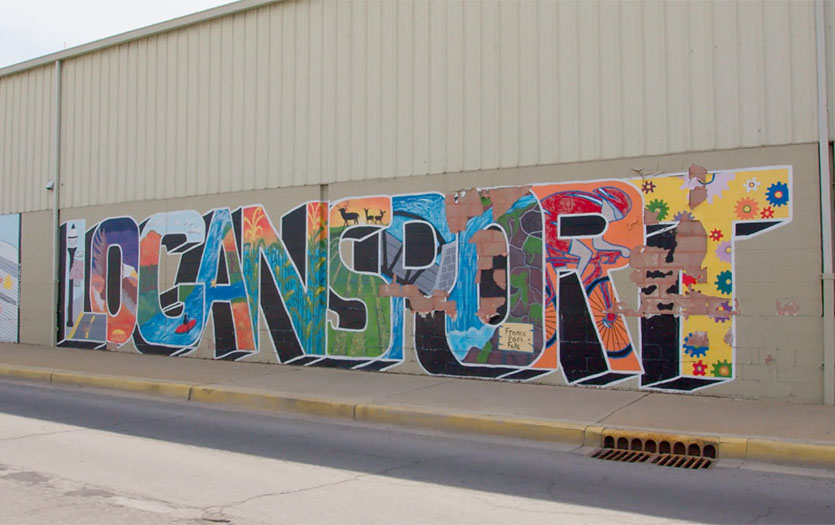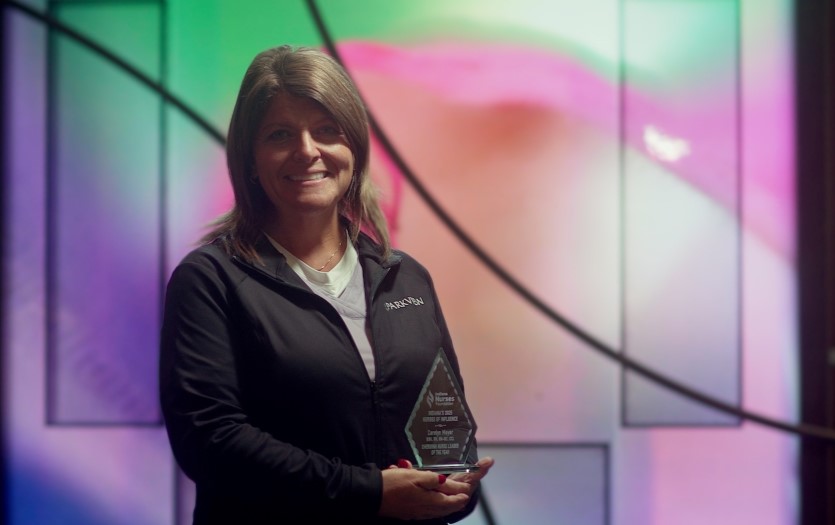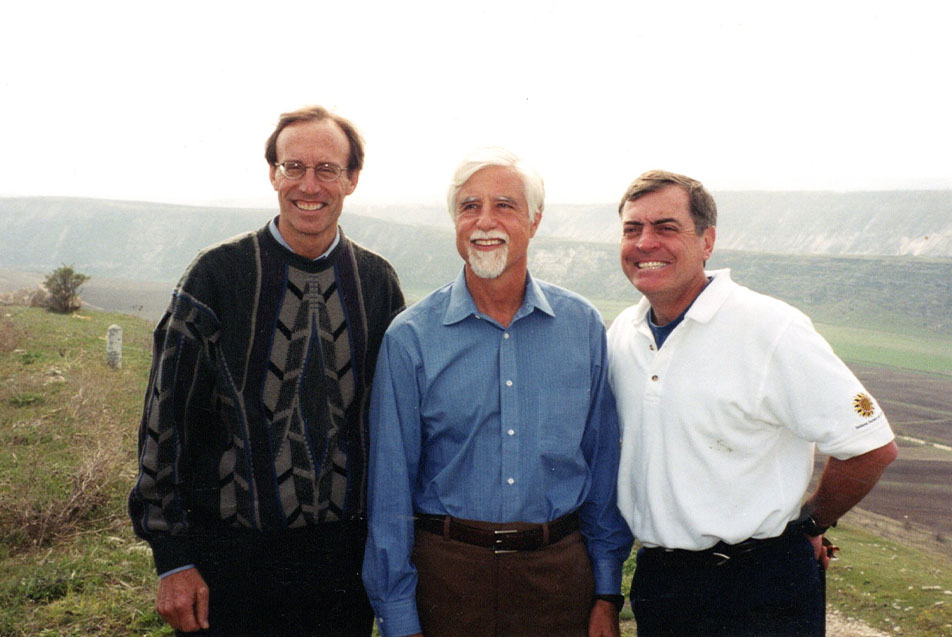
Basil Genetos, MD, PPG – Cardiology, truly helped to shape cardiology as we know it in northeast Indiana and northwest Ohio. Now, as he approaches retirement, he reflects on the many changes he’s seen in the specialty over his 40+ years practicing medicine.
Rooted in hard work
I was born and raised in Gary, Indiana. In the ‘50s and ‘60s the economy was good, and I really had a great upbringing. There were a lot of immigrants, including my father. When he was 12, his parents put him on a boat from Athens, Greece, to Marseille, France, to New York City with two notes on his back. One read “Put this boy on a train to Chicago,” and the other read, “Put this boy on a train to Rockford, Illinois.” He had relatives there who took him in. He grew up working in restaurants, and ultimately, owned two restaurants himself in Gary. He met my mother in Gary and they had three boys.
In all of my years working as a doctor, I tell people, I’ve still never worked as hard as my father did. He was such a strong role model for me. He wanted all of us to go to college and to succeed.
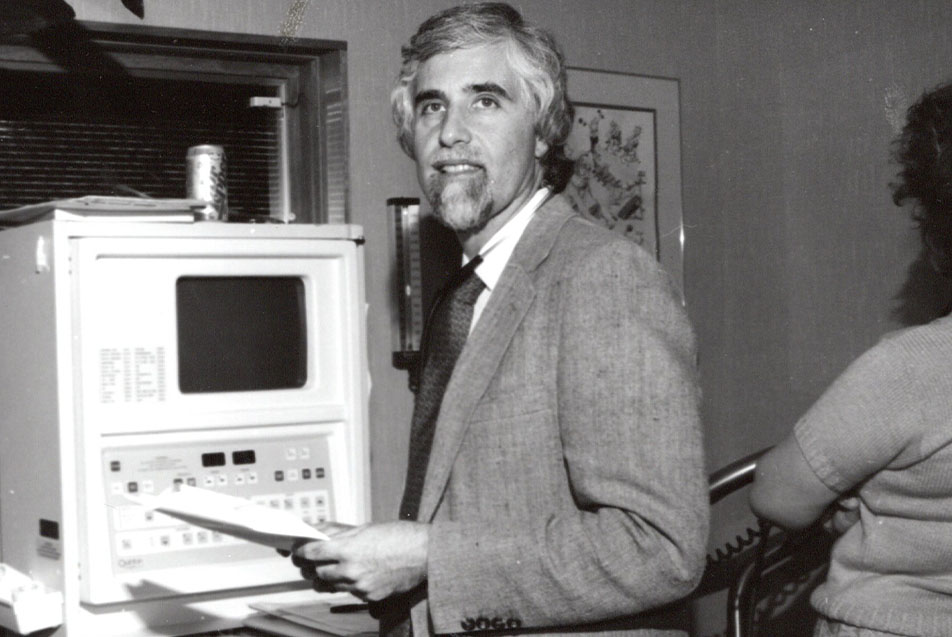
Choosing a career path
I went to the same school from kindergarten through senior year, Horace Mann School, which was truly a great school system. We had a cottage on Miller Beach on Lake Michigan, so we spent our summers there. I went to IU Bloomington for undergrad. I was always really good at math – I was running the register in our restaurants from the age of 8 – so I thought maybe I’d be an accountant. My father convinced me to go premed.
During my sophomore year as a medical student, I really got introduced to the hospital. My physical diagnosis instructor was Dr. Richard Childress. Especially compared to other professors at the time, he was very mild mannered and gentle. He was a cardiologist and that’s where my interest developed. I took a lot of cardiology courses my junior and senior years.
I went to Indiana University Indianapolis Medical Center for all of my additional training, including my internship, residency, chief residency and two-year cardiology fellowship. That was all that was required back then. There was no special training for electrophysiology or coronary intervention.
During this time, my wife, Sharon, mentioned that it would be fun to study overseas, somewhere in Europe. I spoke with Dr. Charles Fisch, who was very well known and served as the Chairman of Cardiology at Indiana University and as the President of the American College of Cardiology. At that time, he was one of the leading experts in interpretation of EKGs and complex arrhythmias. He told me there was a heart institute in Amsterdam in the Netherlands and they speak English, so I should go there. For at least four months. Then he asked if I wanted to do my cardiology fellowship at the IU Med Center when I came back. This supreme being arranged my entire career in 15 minutes. It was incredible.
Putting down roots
When I was looking for a place to practice, I wanted to join a small group. Our professors at IU kept encouraging us to go to Fort Wayne. Up until 1977, there were no cardiologists in Fort Wayne. They were doing bypass surgery, but radiologists would do the coronary arteriogram and then the cardiac surgeon would look at films and decide if the patient needed surgery. Parkview wanted to recruit cardiologists, so they convinced the radiologists to give up the arteriograms to entice physicians to the area. In 1978, I was the third cardiologist to come to Fort Wayne.
Things were slow for a very short time and then took off quickly. Initially, our biggest referral source was coronary care nurses. Typically, a family doctor would come in and check on a cardiac patient, but the nurses encouraged them to have a cardiologist see them. In 1980, we recruited Robert Godley, MD, who I knew from IU. He was the chief resident the year behind me and was well versed in echocardiography. Then in 1981, we recruited Michael Mirro, MD, who was the same year as Bob at IU. He brought a subspecialty in electrophysiology.
From there, we kept adding more and more cardiologists to keep up with the demand. We leaned on our connections at IU and were able to get Charles Presti, MD, Stephen Brown, MD and Ray Dusman, MD. From our connections at Iowa, where Dr. Mirro did his electrophysiology fellowship, we recruited doctors Kevin Kelly and Fred Doloresco.
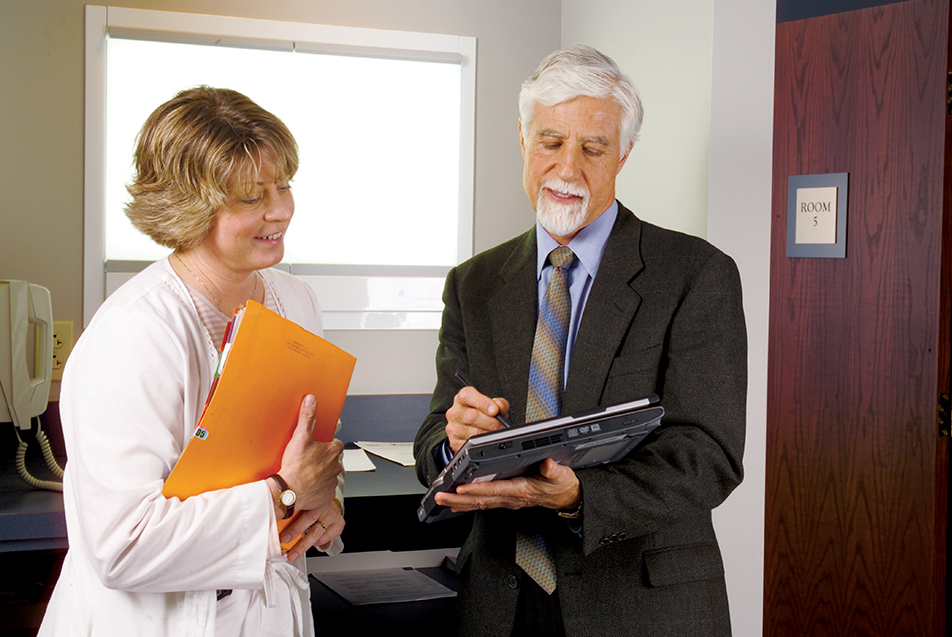
Expanding the footprint
Our group was new to the area, so we needed to educate and alter the referral pattern. We started going to local communities and giving talks to family doctors in outlying areas. We started getting more and more outside referrals and doctors asking us to come and have clinic in their buildings. First in Auburn, then Wabash, and on and on it grew. Today we have ten outreach clinics and three offices in Allen County.
In those first few years, we worked hectic hours. We’d come in at 6 a.m. and stay until 9 o’clock at night. We’d take turns taking the night call and then work the next day as well. Back then, we saw returning patents in 10-minute intervals, so there was no time to chart. You’d get to the end of the day and have a stack of 20 charts to work through. I have to give a lot of credit to our spouses. I’m sure they felt like single parents. But I would also say it was an exciting time, as things were taking off.
The evolution of cardiac care
Cardiology has changed dramatically over the years, perhaps more than any other subspecialty. Back in 1978, there were few medications to manage things like hypertension, coronary disease, heart rhythm disturbances, congestive heart failure, blood pressure or cholesterol, so they weren’t very well controlled. Now we have statins and beta blockers and a number of options to safely manage these conditions.
An acute myocardial infarction (MI), also known as a heart attack, was basically treated with intravenous Heparin, aspirin and maybe lidocaine. We would essentially watch them have the heart attack and then treat any complications that ensued. There just wasn’t much we could do back then. In Switzerland, in 1979, they performed the first balloon angioplasty. We’d had no training on the procedure in medical school, since it didn’t exist, so in 1981 I went to Milwaukee, Wisconsin, and spent some time training with a cardiologist who was doing it. The first patient I performed the procedure on was the CEO of a big company in Warsaw. It went well. I can still remember, when I went up to his room later to check on him, he had a bottle of champagne for me to celebrate with him and his family.
Back then, we wouldn’t do a heart catheterization for a week or so following a heart attack. TPA came out in the mid-to-late ‘80s and was used to dissolve blood clots. Some groups started being really aggressive and taking acute MIs right to the cath lab to do an emergency balloon angioplasty and it seemed to work well. It was safer than TPA because there was less stroke risk. A few years later, we began following this practice, and now it is the standard of care. It’s a huge advantage to patients. MIs are much smaller, there are less complications and better outcomes.
Length of stay is another area where we’ve seen an immense shift. When someone had a heart attack, they would be in the hospital for 7-14 days. Now, that’s a few days in most cases. Back then, if someone was having a standard catheterization following an abnormal treadmill, they’d come in the night before the procedure, we’d see them that night, they’d get the cath the next morning and, even if the cath was normal, they didn’t go home until the next day. Now the vast majority are outpatient; the patient goes home same day. Bypass surgeries also stayed much longer, often 10 days or more. Now, most go home in 4-5 days. Activity levels following a heart attack, intervention or bypass are much faster now, thanks to cardiac rehab, which is so helpful.
When I think about the future of medicine, I think genetics will play a huge role. With medications, so often it’s still trial and error. We have more options to offer, but we have to try it and see if the patient has a reaction or not. It would be amazing if, based on genetics, we could better predict what medications will work and what might cause side effects for each individual patient.
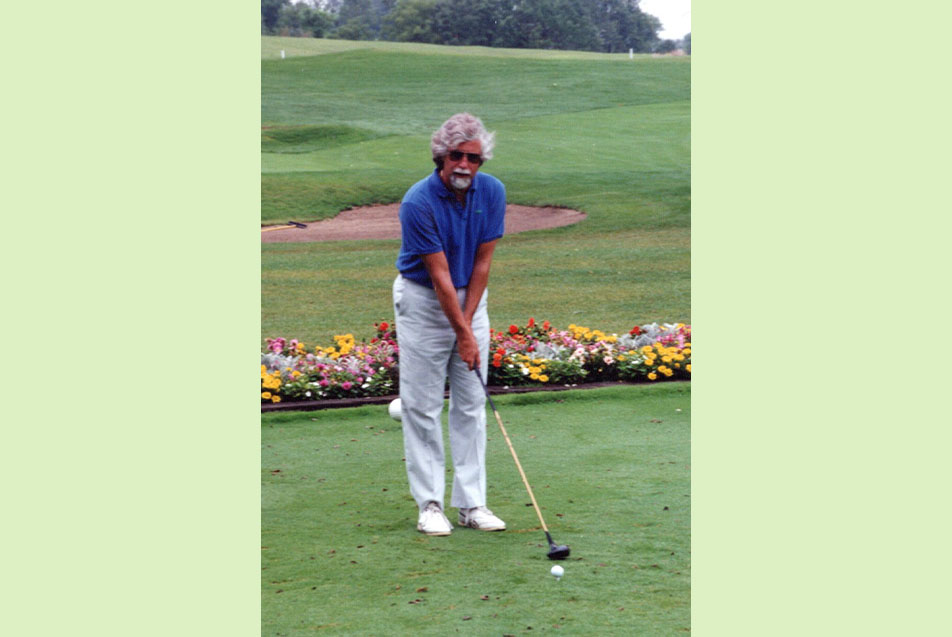
Reflection
Looking back on my career, there have been so many amazing relationships. We’ve had such little turnover among the staff. There are administrative assistants, nurses, echo techs, who have been here for more than 40 years. Our providers and team members have been so harmonious over the years.
Then I think about my patients. The other day, I saw a gentleman I’ve been seeing for more than 40 years. He came to me in 1979, when he was 12 years old. That’s so rewarding. I’ve loved developing these connections with my patients.
We plan to spend half the year on Lake Wawasee and then the other half at our place in Hilton Head. We’ll visit our grandkids. I’ll read and golf. Honestly, I’ve been an early riser forever so I’m sure I still will be. Some days I’ll wake up and have everything I want to do done by 6 a.m. and wonder what to do with myself.
This has been a team effort. Parkview’s been great to us over the years. Our partners have been great over the years. Our staff is great. As I prepare to leave, I would tell other providers to just be kind to their patients and staff and appreciate what they’ve got.
I’ll miss being a doctor most of all. I’ll miss being needed. Truthfully, I worked much longer than I thought I would. Back in my 30s and 40s I thought we’d all be retired or dead by our 70s, but here we are! I started cutting back over a year ago to see if I could tolerate it, and I think it’s going to be OK.
